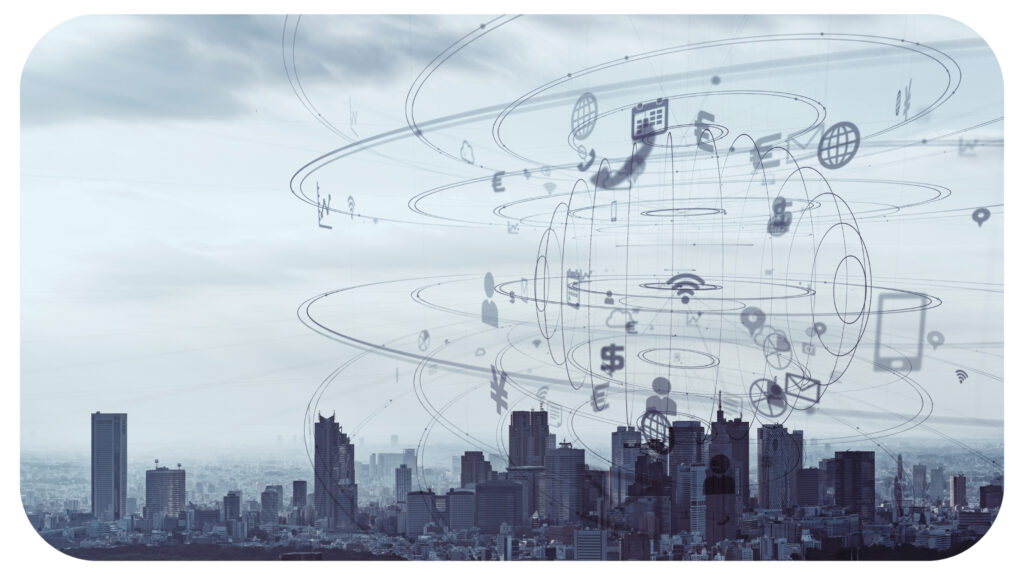Creating Smarter and More Energy-Efficient Buildings With IoT
Explore the impact of IoT technology on building construction. Learn about energy-efficient buildings that offer improved amenities and cost savings for residents.

Today’s building construction projects are much different than they used to be. Now, property designers and city planners are able to leverage IoT (Internet of Things) technology to make buildings intelligent and introduce a number of benefits to their residents.
From energy-efficient features to improved amenities and comfort features for residents, IoT is completely shifting how new building projects are planned and executed for many urban areas.
How IoT is Maker Buildings More Intelligent
When you think about a typical office building or apartment complex, there are various elements that all come together to provide lighting, comfort, and building safety to everyone who uses them.
IoT has made it much easier and more efficient to monitor and control all of these components while helping to reduce building costs and improve the well-being of their residents.
HVAC Optimization
Air conditioning units are one of the largest contributors to monthly building expenses. This is especially the case in larger commercial buildings or multi-resident homes and apartments.
While traditionally, HVAC units were manually controlled by building occupants, IoT-enabled HVAC systems are able to operate with considerably better efficiency and can intelligently monitor and adjust temperatures based on actual needs.
IoT devices are able to monitor when someone is in or outside of a building and adjust temperatures up or down to minimize usage. This helps to save energy and contributes to much lower utility bills.
Smart Lighting
Another extension of the added energy efficiency that IoT can provide is in smart lighting solutions. But “smart” lighting doesn’t just refer to motion sensors that are installed in a building to turn on and off automatically. IoT-enabled smart lighting can also be programmed to respond to various elements outside of the building, such as weather patterns or the time of day.
There are now IoT devices that can detect the amount of ambient light coming into an area and adjust it based on the needs of the building. These smart lighting systems can also be interconnected with other important building elements like security or safety systems to help deter intruders or follow certain flashing patterns to help occupants evacuate areas safely as needed.
A great example of how smart lighting can improve energy efficiency is the development of the Texas School District. Using the Lantronix 24-Port Managed Gigabit Ethernet PoE++ Switch and a combination of intelligent lighting solutions, the school was able to achieve seamless interoperability between its lighting and HVAC systems and create important automation in its security and fire alarm protocols. This successfully led to a 41.4 percent reduction in the building’s energy usage saving them over $33,000 a year.
Predictive Maintenance
Building maintenance can create a number of unexpected expenses that appear when you’re least expecting them. This could be a malfunctioning air conditioning system or more complicated gas or water issues.
Since most building maintenance schedules have to follow a schedule and can’t happen every day, sometimes, apparent issues may take a while to become discovered – leading to even more issues that are costly to repair. IoT solutions help to reduce the likelihood of this happening by providing predictive maintenance data.
Unlike human technicians, IoT devices can provide 24/7 building monitoring of important building utilities. This lets them warn technicians if certain trouble codes appear on working equipment or even monitor the air quality to make sure AC units are working the way they should at all times.
What are the Benefits of IoT-Enabled Buildings?
IoT-enabled buildings provide a number of benefits for their occupants. Some of these include:
Better Cost Savings
Althought smarter buildings can be a great convenience, there are also many economical benefits associated with their use. For business owners, IoT devices can help them save considerable costs keeping the building maintained.
By using energy efficient HVAC and lighting setups, utility bills can get cut in half while still making sure everyone who uses the building is comfortable.
While many landlords need to have regular maintenance checks on important equipment in the building, these routine jobs don’t always catch important issues as they’re happening. By relying on IoT devices and their monitoring solutions, building owners can see in real-time how critical systems in the building are functioning and order emergency services as needed before larger issues show up.
Increased Comfort Levels for Occupants
IoT technology can help make residents more liveable and help ensure all individuals are able to enjoy every element of their homes. This includes living environments that are the perfect temperature, adequately lit, and meets their own unique needs all hours of the day without their direct intervention.
Very few people spend all day in their homes, but when they are, they don’t want to be fighting with different lighting settings or temperature – especially during extreme hot and cold weather. IoT-endabled buildings are able to adjust settings to a home based on current and forecasted weather conditions as well as using intelligent sensors to make sure the lighting in a home is just right based on the time of day.
This doesn’t just help residents of a building feel more comfortable throughout the day, but it can also be a great productivity booster in busy office settings.
Improved Sustainability
Over the years there has been more and more awareness of the impact our homes and offices can have on the environment. Each of use has an important responsbiliity to do our part when making more sustainable choices about how we live and work.
The core component of IoT is doing more with less. When IoT devices monitor all systems in a building, they’re able to make the most efficient adjustments to them in real-time. These extra minutes and hours of energy savings adds up to significant amount of saved resources over the course of a year.
These initiatives are highly advantageous when applied in hospitality settings, where energy is expended heavily annually. For example, just a couple of years ago, Hotel Marcel became one of the first U.S. hotels to operate solely on renewable energy.
Using a combination of IoT integration as well as UL-certified switches and a DC microgrid, the building is now able to automate and control all of its electrical systems using the power it generates on its own.
Using Technology to Improve Living Conditions
IoT technology is continuing to make a significant impact in the way humans live and interact with their environment. With smart buildings becoming a high priority for developing countries, there is a strong likelihood that all new residential and office buildings will make use of this technology over time.
This will have a large impact on the comfort and well-being of residents while making a larger dent in the global initiative of creating more sustainable ways to live and work.
Author Bio:
Subbu Seetharaman

Subbu Seetharaman is the Director Of Engineering, at Lantronix, a global provider of turnkey solutions and engineering services for the internet of things (IoT). Subbu is an engineering executive with over 25 years experience in leading software development teams, building geographically distributed, high performing teams involved in developing complex software products around programmable hardware devices.
Recommended For You
How Good Is PayPal Customer Service?
Most Inside
Most Inside offers high-quality recommendations and valuable updates to enhance all aspects of your life, providing premium guidance and enriching experiences.




